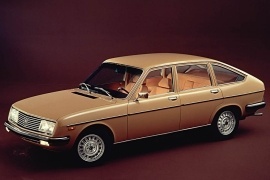
LANCIA Beta
Generations Timeline, Specs and Pictures

After being purchased by Fiat, Lancia had to get some profit, and the sports cars didn’t make that kind of money, so it had to offer some regular vehicles for families.
Fiat decided that Lancia had to build cars for everyone, and the Beta was designed to be that vehicle. While the sporty coupes were still kept on the production lines, the Italian carmaker managed to offer a five-door version that could fight better against French cars. But they didn’t want to go with the flow and offered just another three-box sedan.
The Beta showed a distinct front fascia with modern headlights. While most of the carmakers used round headlights, the new Berlina featured twin headlamps covered under a glass panel. Its chromed front fascia and some other trims on the bodywork showed a different styling than most of the other cars on the market. Thanks to its shape, the Beta sat between a three-box and a hatchback vehicle.
Inside, the carmaker made a roomy interior thanks to the tall greenhouse, but the materials used were not the best on the market. Starting with the 1978 model, the Beta received wool-based upholstered seats, which were far better than the regular cloth ones. Its instrument cluster featured an interesting design with two large dials on the center, the speedometer, and the tachometer, flanked on the sides by four gauges for fuel, temperature, oil pressure, and voltage. On the center stack, the carmaker installed the radio and the ventilation controls.
Under the hood, Fiat installed its twin-cam engines that were notorious for their power and torque. It provided good performances, especially since it was mated to a five-speed manual gearbox while most of the other carmakers were still stuck in the fourth gear.

It was still the motoring industry’s pioneering age, and Lancia already revealed a second model in its range, the Beta.
Vincenzo Lancia founded the brand in November 1906 and launched its first model, the 12HP-Alpha, in 1907, a vehicle that the brand produced for a year until 1908. The company founder had the idea to name its vehicles from the Greek alphabet. Obviously, the second model was the Beta.
In those pioneering ages, it was common to deliver a car to a customer in chassis-form, with the engine, transmission, steering wheel, dash panel, and driver’s seat. After delivery, the car was taken into a coachbuilder specialty shop that completed the body at the customer’s request. Lancia offered a bodywork himself, with large front fenders arched over the wheels and covered the rear ones with another pair, to keep the driver passengers clean. The Beta was fitted with acetylene headlamps. A canvas-roof was available as well.
As part of the official bodywork, the passenger area was fitted with a bench in the front and another one for the rear occupants. An interesting option to help the driver was the double accelerator command. It was either by the gas-pedal or by a lever, which could hold a constant gas angle. It was like prehistoric cruise control.
The inline-four engine fitted under the hood offered 20 hp, which was about eight more than its predecessor. To send the power to the rear wheels, the carmaker chose a chain-type transmission.























































